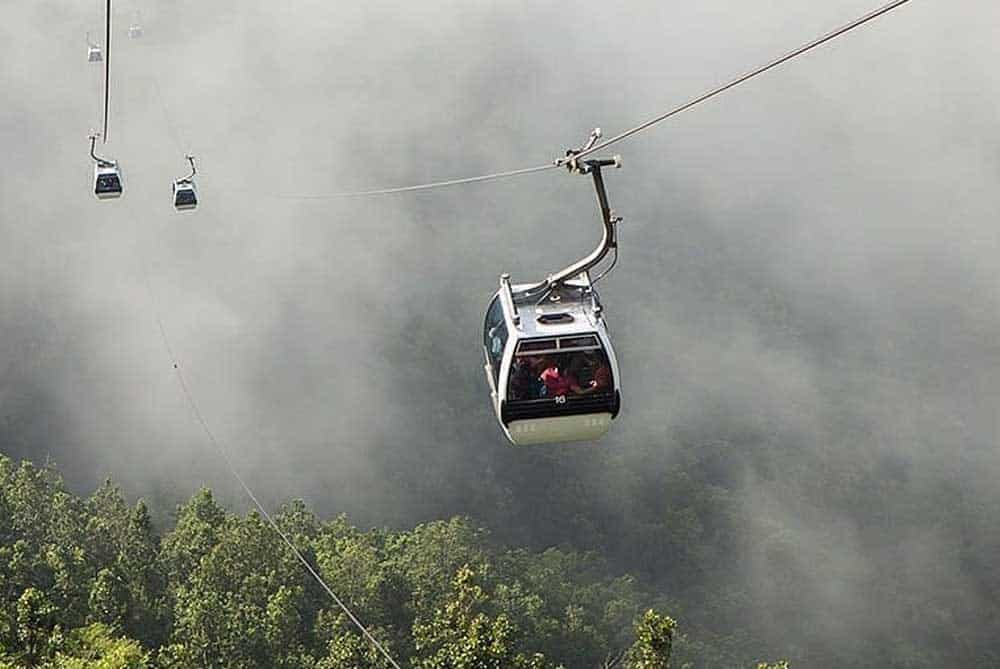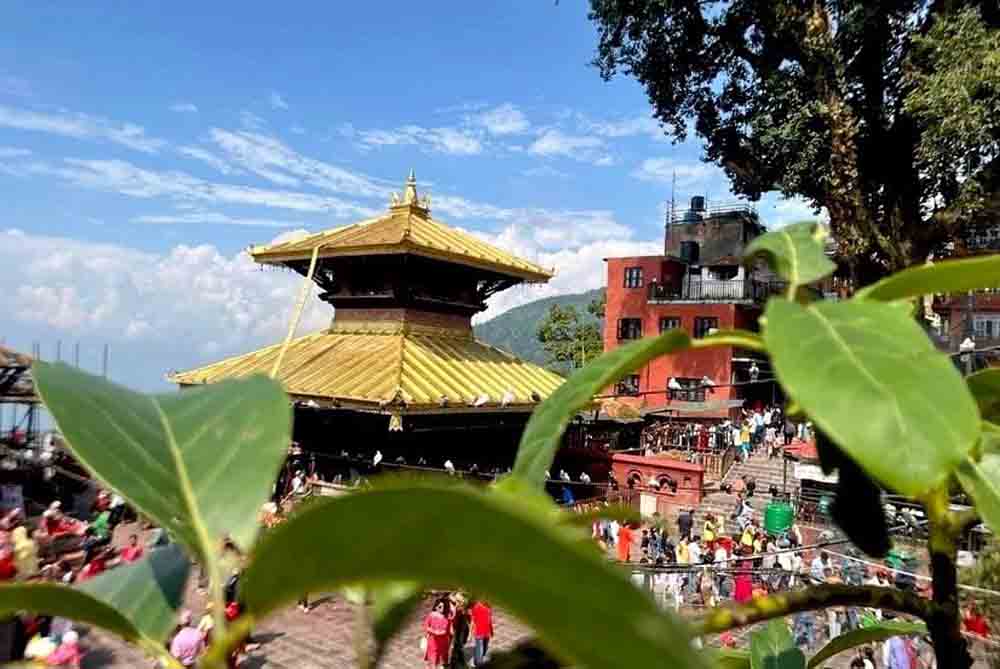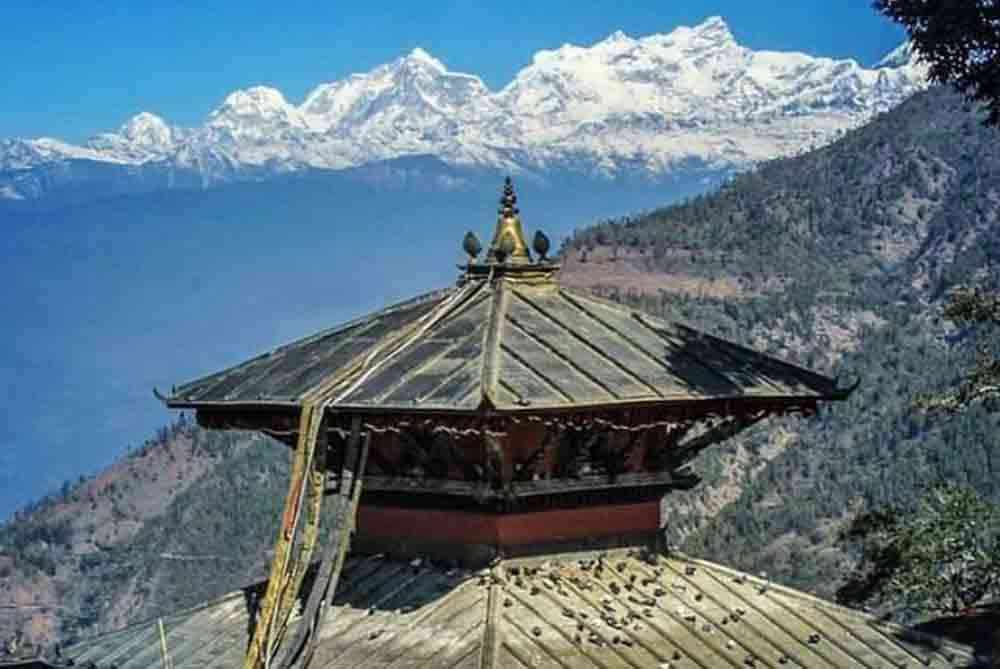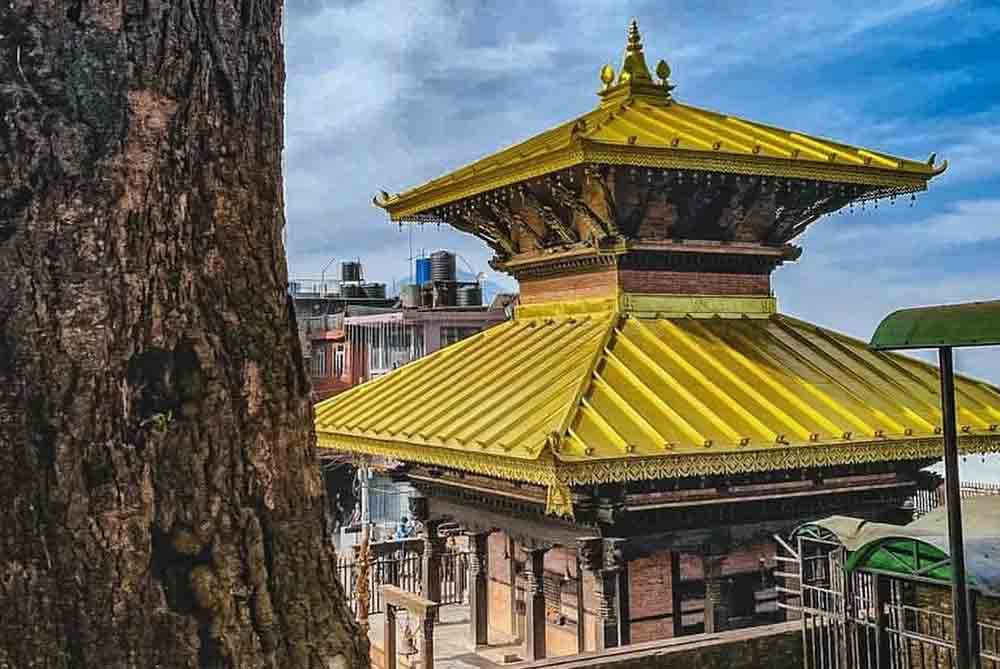Unveiling the Mystique: Manakamana Devi Temple in Nepal
The Manakamana Devi Temple in Nepal stands amid the Himalayas as a testament to Nepal’s rich spiritual and cultural heritage. With its breathtaking location, deep-rooted traditions, and unique mode of transportation, this sacred abode has captivated the hearts of devotees and tourists alike.
The Legend of Manakamana Devi
Goddess Manakamana, also known as Bhagwati, was an incarnation of the powerful Hindu goddess Parvati. The legend surrounding the Manakamana Devi Temple is deeply rooted in Nepalese history. According to the ancient tale, Lakhan Thapa, the royal priest, knew that the Queen of Gorkha possessed divine powers. The King, her husband, saw her in her angelic form, along with the priest as a lion (her disciple). Shortly after witnessing this miraculous sight, the King died. The Queen sacrificed her life atop the pyre, out of love for her King. She vowed to Thapa that she would reappear in six months. Her reincarnation would occur when a farmer toiling on his field accidentally split a stone in half and sprouted a stream of blood and milk from within. On hearing the news, Thapa halted the stream only after chanting tantric rituals.
The word of the Goddess’s miraculous powers quickly spread, and people from far and wide began to visit the temple to seek her blessings. The Goddess can fulfill the wishes of her devotees, and countless stories of fulfilled desires and wishes surround the temple. A small shrine was built, establishing the Manakamana Devi Temple in the 17th century. Only Lakhan Thapa’s descendants are priests at this temple, and the current priest is the 17th generation descendant from his lineage.
The name “Manakamana” itself carries a profound meaning. “Mana” translates to “heart” or “mind,” while “kamana” means “wish” or “desire.” Therefore, throughout the land, the temple with the Goddess is often called the “wish-fulfilling goddess,” as devotees believe the benevolent Goddess grants their heartfelt desires. The legend of Manakamana Devi has been passed down through generations, and the temple continues to be a place of deep devotion and spiritual significance for Hindus in Nepal and beyond. Devotees undertake arduous journeys to seek the blessings of the Goddess, hoping for prosperity, good health, fertility, and success in their endeavors.
To this day, the Manakamana Devi Temple stands as a symbol of faith, devotion, and the power of belief. The legend of Goddess Manakamana has become intertwined with the cultural fabric of Nepal, attracting pilgrims and tourists drawn to the mystical allure of this sacred place.
History Of the Shrine
Since it is said that Manakamana Devi made her presence felt during the reign of Prithvi Narayan Shah who is the founder of Nepal as we know it, the King launched a trust to worship the deity and also to feed pigeons every day. The gold plated main gate was built by four siblings namely, Kar Bir, Sur Bir, Fauda Singh and Khagda Singh. The bronze bell which was gifted to the temple was repaired by Kulman Thapa. The temple was hit by the multiple earthquakes in Nepal which led to its repair and restoration by the Department of Archaeology. The windows were plated with 14 kilograms of gold which cost over 90 million NPR.
Worship
The universe consists of five elements according to Hinduism – air, water, earth, fire and ether. To worship the goddess, it is important to carry among the offerings something related to these elements. Oil lamps, cloth- usually red in color, vermillion, rice grains, fruits and foods are some common offerings that people make here.

An Architectural Marvel
The architecture of the Manakamana Devi Temple showcases the traditional Newari style, known for its intricate craftsmanship and artistic finesse. The temple’s structure follows the distinctive pagoda style commonly found in Nepal.
Exterior Design
The temple is a three-story wooden structure adorned with exquisite carvings and colorful decorations. The intricate woodwork on the exterior depicts various mythological figures, deities, and motifs, reflecting the region’s rich cultural heritage. The carvings exhibit meticulous attention to detail, showcasing the skills of the Newari artisans.
Pagoda Style
The Manakamana Devi Temple features a multi-tiered pagoda-style roof, a characteristic of Nepalese temple architecture. Each tier of the roof gradually decreases in size, creating an elegant and upward-reaching silhouette. The pagoda roof is embellished with golden finials and ornate wooden carvings, enhancing the temple’s aesthetic appeal.
Color Palette
The Manakamana Devi Temple boasts vibrant colors that adorn its façade. Traditional hues like red, yellow, and green paint the wooden surfaces, creating a visually striking impression. These colors contribute to the temple’s aesthetic appeal and hold symbolic significance within Hindu culture.
Sanctum and Inner Chambers
The temple’s inner sanctum houses the small golden statue of Goddess Manakamana. The shrine is adorned with traditional oil lamps and religious artifacts, creating an atmosphere of reverence and spirituality. The temple’s interior walls are also embellished with intricate carvings and paintings depicting various deities and religious scenes.
A Melting Pot of Rituals and Festivals
The Manakamana Devi Temple is a vibrant cultural hub with yearly religious ceremonies and festivals. Various rituals are performed by the temple priests and devotees to honor Goddess Manakamana. During these rituals, prayers are offered, and oil lamps are lit. The deity is presented with flowers and fruits. The atmosphere is filled with devotion and spiritual fervor as devotees seek the blessings of the Goddess.
The temple also hosts a multitude of festivals that further enliven its surroundings.
Baisakh Purnima Mela
Baisakh Purnima Mela, also known as the Manakamana Mela, is one of the most significant festivals observed at the temple. It takes place during the full moon day in Baisakh (April/May) and marks the Nepali New Year. Devotees from far and wide gather at the temple to pay homage to Goddess Manakamana, seeking blessings for prosperity and well-being.
Dashain (Dussehra or Vijayadashami)
Dashain, the biggest and most widely celebrated festival in Nepal, is observed with great enthusiasm at the Manakamana Devi Temple. It falls in the month of September or October and lasts for 10 days. Devotees flock to the temple during this time to offer prayers and receive blessings from the Goddess. Special rituals, including animal sacrifices, are performed, and the temple premises come alive with cultural performances, music, and festivities.
Teej
Teej is a festival dedicated to the Hindu goddess Parvati, celebrated by married women for marital harmony and well-being. The Manakamana Devi Temple witnesses a grand celebration of Teej, usually in the month of Bhadra (August/September). Women dress red, observe fasting, and pray to the Goddess. The temple becomes a hub of devotional activities, including singing, dancing, and cultural programs.
Maghe Sankranti
Maghe Sankranti, also known as Makar Sankranti, is an important harvest festival celebrated in Nepal. It usually falls on January 14th and marks the sun’s transition into the zodiac sign of Capricorn. Devotees visit the Manakamana Devi Temple on this auspicious day to offer prayers and express gratitude for a bountiful harvest.
These rituals and festivals create an atmosphere of joy, devotion, and cultural unity at the Manakamana Devi Temple, offering visitors a unique and immersive experience of Nepal’s rich religious heritage.
Beyond the Temple: Exploring the Surrounding Area
The Manakamana Devi Temple is located in the Gorkha district of Nepal, surrounded by picturesque landscapes and cultural attractions. Here are some areas of interest in the vicinity of the temple:
Gorkha Durbar
Gorkha Durbar, also known as Gorkha Palace, is a historical fortress atop a hill in Gorkha. It served as the ancestral home of the Shah dynasty, from where King Prithvi Narayan Shah launched the unification campaign of Nepal in the 18th century. The palace complex houses the Gorkha Museum, which showcases artifacts, weapons, and artworks depicting Nepal’s history and the Shah dynasty.
Gorakhnath Cave
Situated near the Manakamana Devi Temple, Gorakhnath Cave holds great religious significance. It is believed to be the meditation cave of Guru Gorakhnath, a revered saint and yogi. Devotees visit it to pay homage and seek blessings. The den offers serene surroundings and a peaceful atmosphere for meditation and reflection.
Pokhara
Pokhara, a popular tourist destination, is located approximately 85 kilometers west of the Manakamana Devi Temple. Nestled beside the tranquil Phewa Lake and surrounded by the Annapurna mountain range, Pokhara is known for its natural beauty. Visitors can enjoy boating on the lake, hike to the World Peace Pagoda, explore the stunning Davis Falls, or embark on treks to the Annapurna Circuit and other Himalayan trails.
Bandipur
Bandipur is a charming hilltop town about 25 kilometers east of the Manakamana Devi Temple. It is renowned for its well-preserved Newari architecture and panoramic views of the Himalayas. Visitors can stroll through the narrow, cobbled streets, marvel at the traditional houses, and experience the rich Newari culture. The town offers beautiful sunset and sunrise vistas, making it a favorite spot for photographers.
Annapurna Circuit
For adventure enthusiasts, the Manakamana Devi Temple is a starting point or a pit stop for the renowned Annapurna Circuit trek. The Annapurna Circuit is an adventurous trek that takes you through different landscapes, including lush forests, terraced fields, and high mountain passes.

A Stairway to Devotion
There are several ways to reach the Manakamana Devi Temple in Nepal.
Manakamana Cable Car
The most popular and convenient way to reach the Manakamana Devi Temple is by taking the Manakamana Cable Car. The cable car ride starts from the base station in Cheres, located on the Prithvi Highway, and brings you to the temple premises. The scenic cable car journey offers breathtaking views of the surrounding hills and valleys, making it a memorable experience.
The timings of the cable car are-
09.00 AM to 12:00 NOON and 13:30 PM to 17:00 PM
Lunch Break: 12:00 NOON to 13:30 PM
Road Transport
By opting for travel by road, the temple can be reached by the following steps.
Take a private shuttle or bus from Kathmandu or Pokhara.
Reach the town of Kurintar.
Trek uphill for 2-3 hours OR take a local jeep or taxi.
An advantage of traveling via this route is that it is scenic. The views offered by the countryside are splendid, and you can explore nature in Nepal.
Trekking
Trekking to the Manakamana Devi Temple is an option for adventure enthusiasts and nature lovers. You can embark on a trek from nearby towns like Gorkha or Kurintar, following the well-marked trails that lead to the temple. Trekking allows you to immerse yourself in the region’s natural beauty and enjoy the serene surroundings.
Helicopter
For those seeking a more exclusive and time-saving option, helicopter services are available to reach the Manakamana Devi Temple. Helicopter tours can be arranged from Kathmandu or Pokhara, providing a thrilling aerial view of the stunning Himalayan landscapes before landing near the temple.
Places To Stay In: Hotels Near Manakamana Devi Temple
A lot of accommodation can be found near the Manakamana Devi Temple according to your budget. There are standard accommodations near the temple, but if you were to opt for Kurintar, you can get plenty of options. A lot of beautiful riverside resorts can be found on the banks of the Trishuli River.
You can opt for one of the following options-
Hotels and Resorts
There are several hotels and resorts near the Manakamana Devi Temple that cater to various budgets. These establishments offer amenities such as comfortable rooms, restaurants, room service, and often include beautiful views of the surrounding hills or the Trishuli River.
Guesthouses and Lodges
For budget-conscious travelers, guesthouses and lodges can be found in the vicinity of the temple. These accommodations usually offer basic facilities, including clean rooms, shared bathrooms, and sometimes a common dining area.
Tea Houses
In some areas, especially along the trekking routes to Manakamana Devi Temple, you may find tea houses. These are basic accommodations primarily designed for trekkers and pilgrims. Tea houses typically provide a place to sleep, basic meals, and hot beverages.
Homestays
For a more authentic experience, you might consider staying in a homestay. Some local families near the temple offer rooms or small guest houses within their homes, allowing visitors to immerse themselves in the local culture and lifestyle.

Manakamana Devi Temple- And How to Go From India
By Air
The nearest international airport to Manakamana Devi Temple is the Tribhuvan International Airport in Kathmandu, Nepal. From India, you can take a flight to Kathmandu and then proceed to the temple by road.
By Road
There are multiple routes you can take to reach the Manakamana Devi Temple by road from India:
- Via Sunauli-Bhairahawa Border- If you are traveling from cities in northern India such as Delhi, Lucknow, or Varanasi, you can reach the Sunauli-Bhairahawa border crossing. From there, you can take a taxi, bus, or hire a private vehicle to reach the temple. The distance from the border to the temple is approximately 120 kilometers (75 miles), and it takes around 3-4 hours to reach.
- Via Raxaul-Birgunj Border- If you are traveling from Bihar or eastern parts of India, you can reach the Raxaul-Birgunj border crossing. After crossing the border, you can hire a taxi, take a bus, or hire a private vehicle to reach the temple. The distance from the border to the temple is around 90 kilometers (56 miles), and it takes approximately 3-4 hours to reach.
By Train
- Identify the nearest railway station- There is no train line in Nepal. You have to travel to a border town and take road transport to reach the temple.
- Reach the border town- Depending on your location in India, you need to reach either the Sunauli-Bhairahawa or Raxaul-Birgunj border crossing. These are the two major border crossings between India and Nepal.
- Sunauli-Bhairahawa Border- If you are coming from cities in northern India such as Delhi, Lucknow, or Varanasi, you can reach the Sunauli-Bhairahawa border crossing. The nearest Indian railway station to Sunauli is Gorakhpur Junction, which is well-connected by trains from major Indian cities.
- Raxaul-Birgunj Border- If you are coming from Bihar or eastern parts of India, you can reach the Raxaul-Birgunj border crossing. The nearest Indian railway station to Raxaul is Raxaul Junction, which is connected to major Indian cities by trains.
Documents Required to Cross The Border- There is no visa required for Indians to enter Nepal. At the border, you need to show a valid ID proof to enter the country. Passport, Voter’s ID, Aadhar Card and Driving License are valid ID proofs which you will need to cross the border between India and Nepal. In an International Flight to Nepal, your passport or voter’s ID are the only identity proofs deemed valid.
